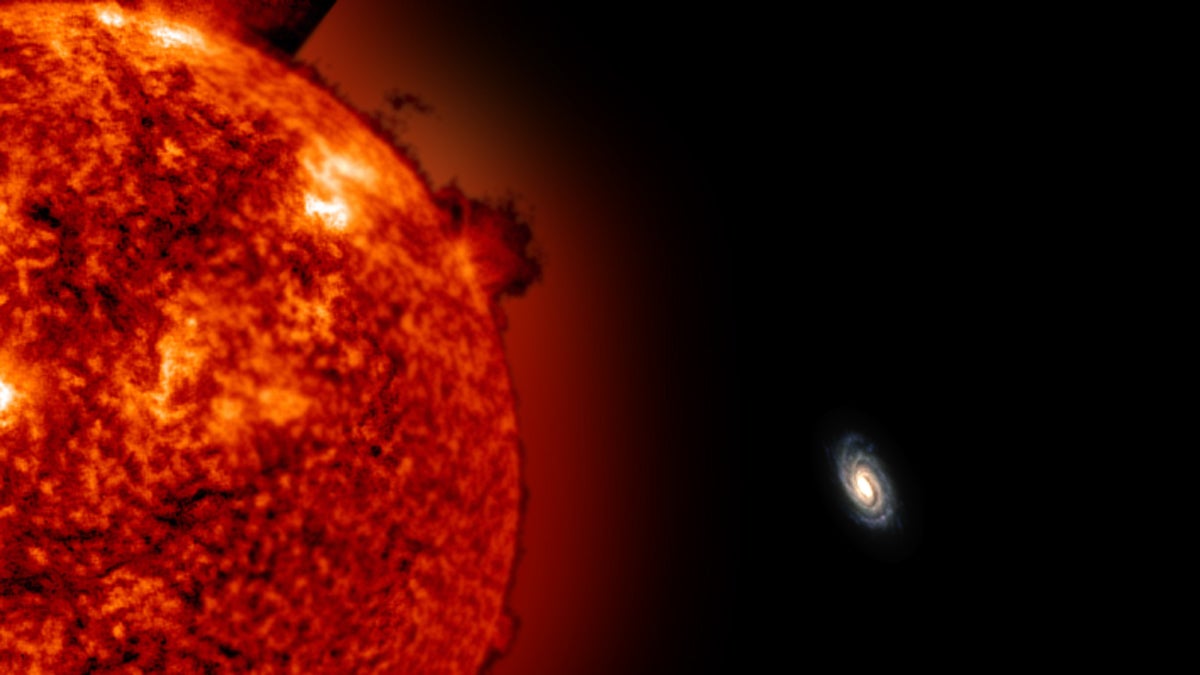Finding our galaxy’s most distant stars
Listen
This simulated image demonstrates how small the Milky Way would look from the location of ULAS J0744+25
Two new stars are found 5,000,000,000,000,000,000 miles away.
Ask astronomer John Bochanski how far the two “cool red giant” stars are that he and his team discovered recently, and he says “really, really, really far away.” That’s an understatement. They are so far away you need 18 zeroes behind the number of miles. “Or, let me put it this way,” said Bochanski, “when the light from that star left the star on its way to our telescopes, people on Earth were just figuring out how to light a fire for the first time.”
Bochanski is a professor of physics at Rider University near Trenton, New Jersey and the further one of the two stars his team found is 900,000 light years away from Earth.
These most distant stars get their name from the light they emit. “These are the last stages for the evolution of a star like our sun,” he explained. “As a star ages, it cools and appears red, but they also expand,” he added. As outer layers expand, the star emits a lot more light, which makes it possible to see the aging star from very far away.
Bochanski and his team found the stars by sorting through mountains of data. “Astronomy is in an era of large surveys,” he said. “Thirty years ago, I would have spent a lot of long nights at the telescope, now I can go on the internet to download info.”
The search started out with six million candidates, found in the data from two large surveys that span about a tenth of the sky. Looking for the right color combinations, and further evaluating the data, the number of possible candidates went down to 1,600. “Then it was time to go to the telescope,” said Bochanski. “We point the telescope at the star and spread the light out, to see if this is really a bona fide distant red giant.”
The main application for this big find is that it could change the models predicting the formation and evolution of our galaxy. “Our current models don’t really predict large numbers of stars at these far distances,” said Bochanski. “If we find more, then we know that models need to be revised and revisited.”
WHYY is your source for fact-based, in-depth journalism and information. As a nonprofit organization, we rely on financial support from readers like you. Please give today.




